Tired of fumbling around with a pocket watch, he wanted something practical to strap to his wrist. Since those humble beginnings a lot of variations have been produced, always building on the iconic original. Chronographs, special “iced-out” versions, gold, steel… if you can think of it, it has been made. The following dates mustn’t be historically, there taken straight from Chrono24. Anyway, enjoy this journey of this little quirky watch, that so perfectly connects the Old and New.
-
1916
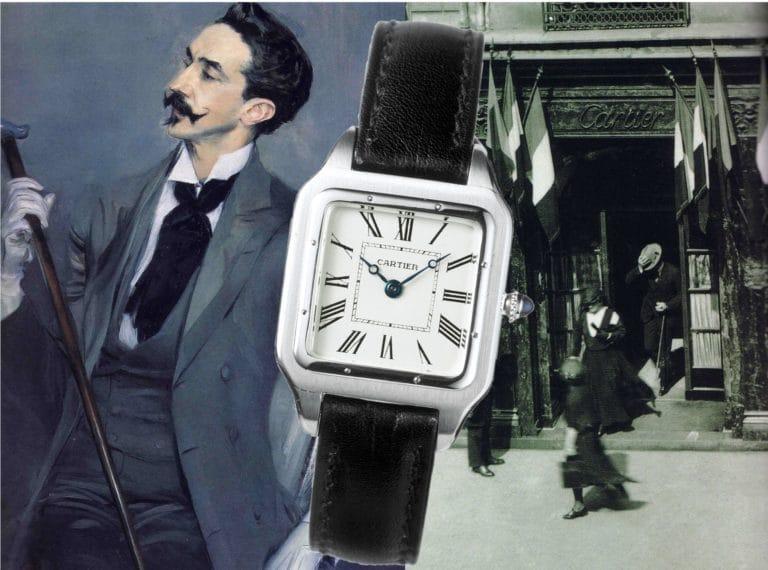
Source
Uhrenkosmos.com – Link -
1970
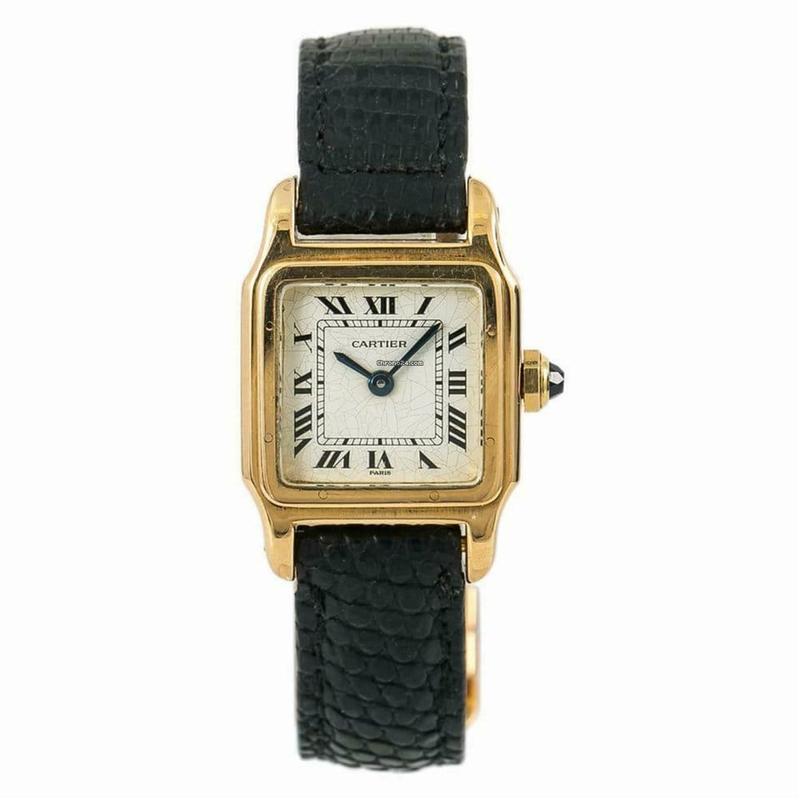
Source
Empire Time Inc, New York (USA) – Link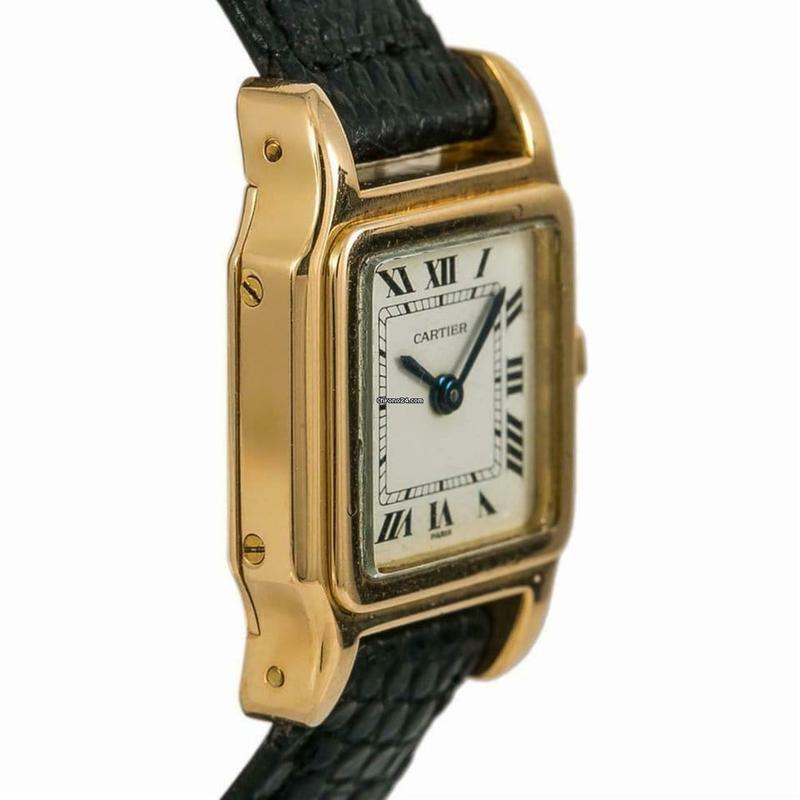
Source
Empire Time Inc, New York (USA) – Link -
1975
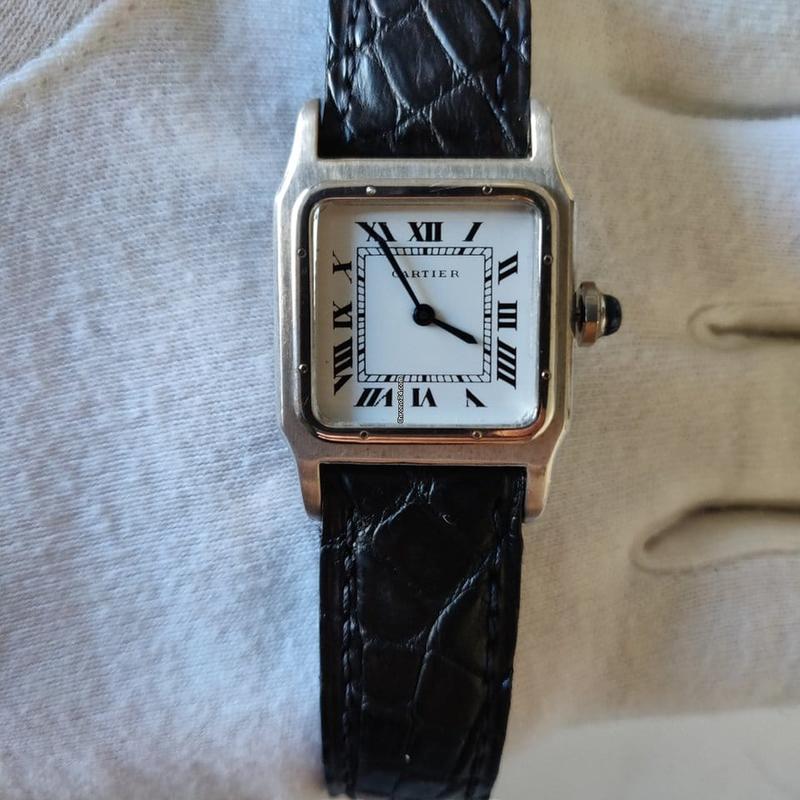
Source
Ashvil V., Grossbritannien – LinkHere we can see the little “Cartier” wordmark in the thin stroke of the V as part of the roman seven indice. 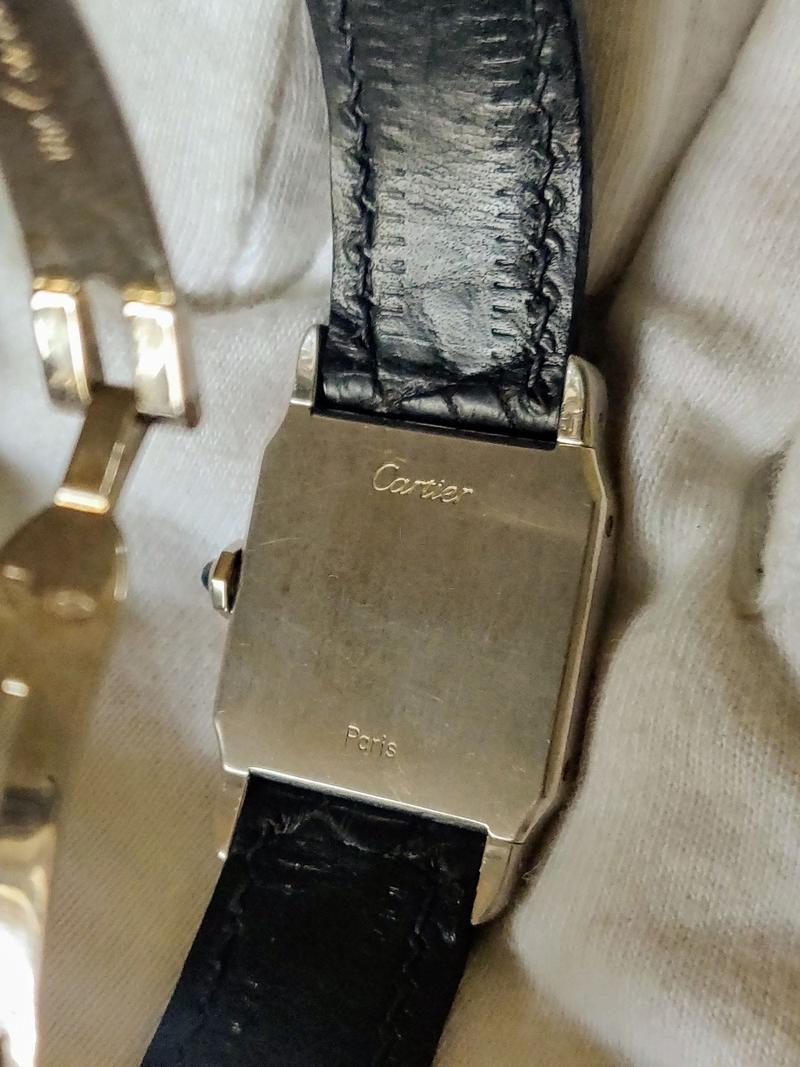
Source
Ashvil V., Grossbritannien – Link -
1980
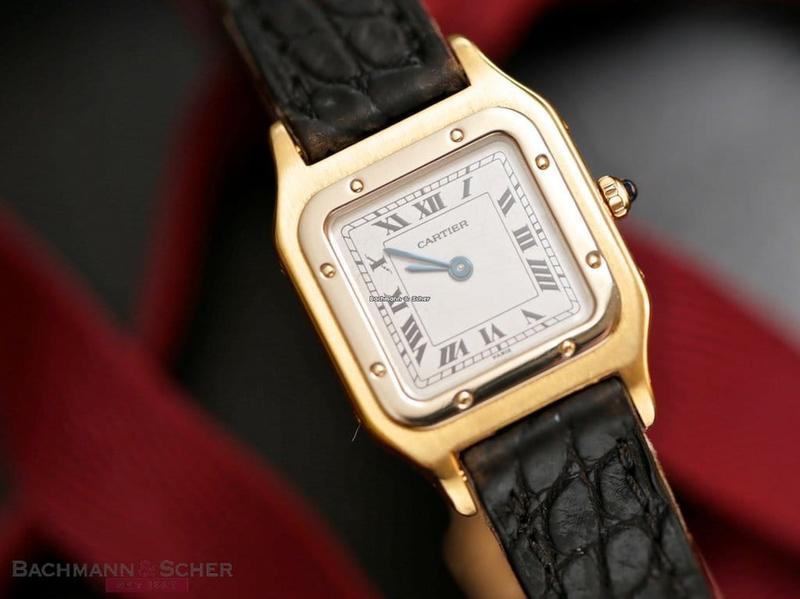
The little “Cartier” wordmark now moved into the thin X stroke of the roman ten indice. The “railroad tracks” making it easier to track the seconds are now on the outer side of the dial, instead of inside. 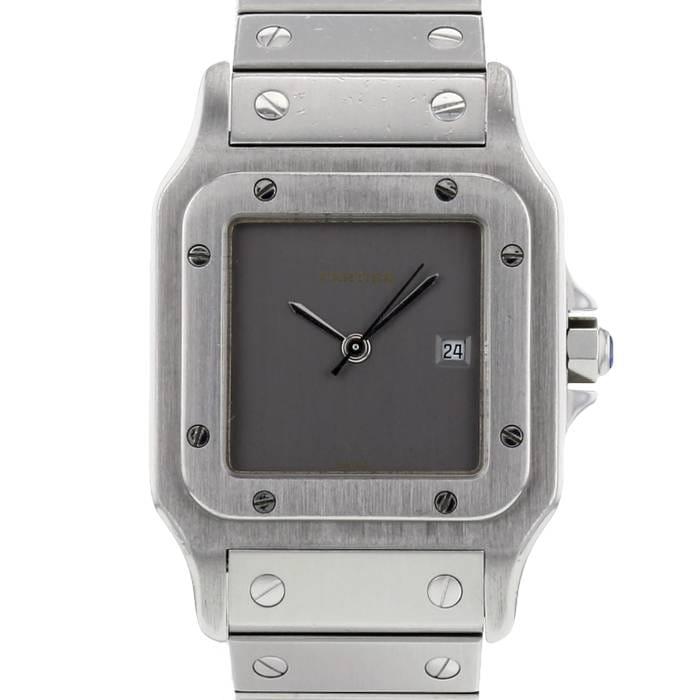
-
1982
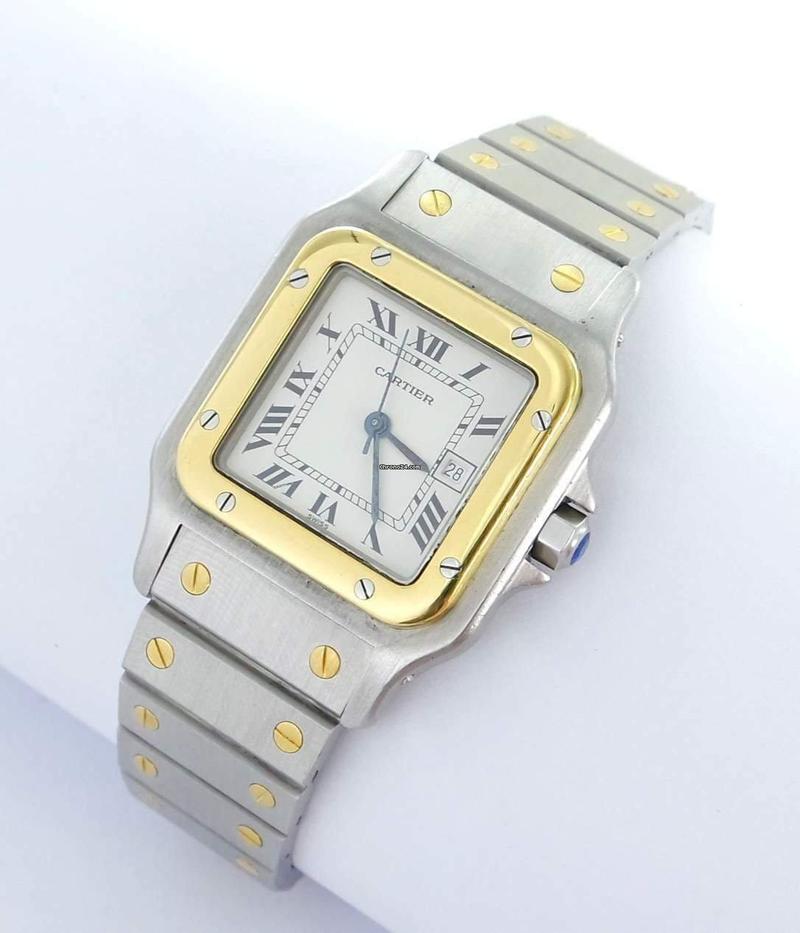
Source
Horus Watch, Düsseldorf (Deutschland) – LinkThe “railroad tracks” are towards the center of the dial, back to the original. A center second hand is introduced. 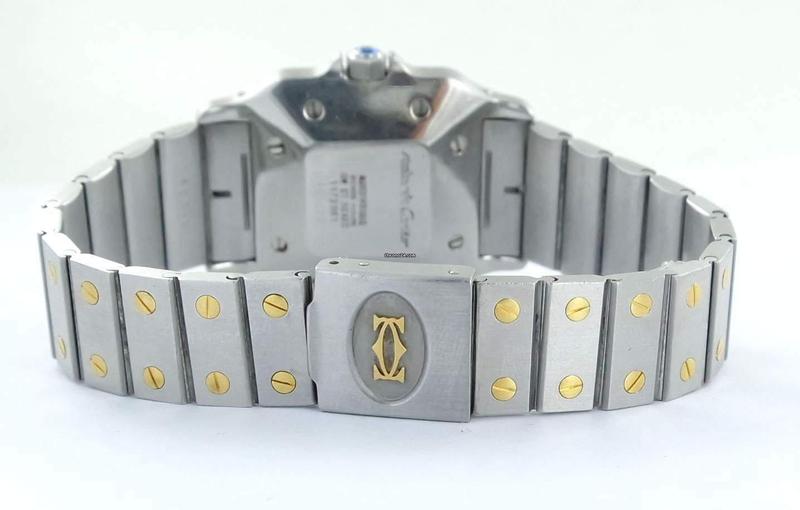
Source
Horus Watch, Düsseldorf (Deutschland) – LinkThe back of the watch is not flat anymore, its angled and therefore reduces the surface area where the watch touches the skin. This reduces sweating below the watch. -
1985
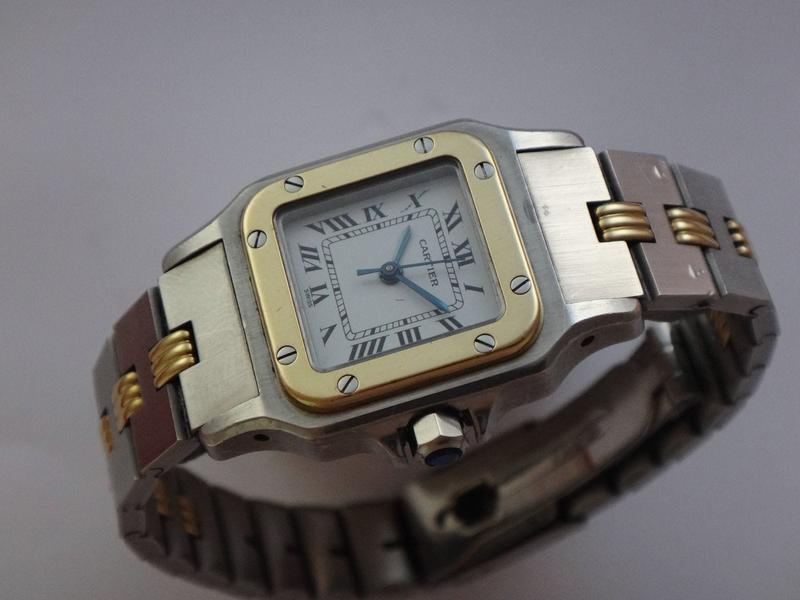
Source
Vintage Watch Trading, Neuchâtel (Schweiz) – LinkThe bracelet slightly changes, getting rid of the screws and introducing central links resembling a “trio of rice beads” holding the bracelet together. 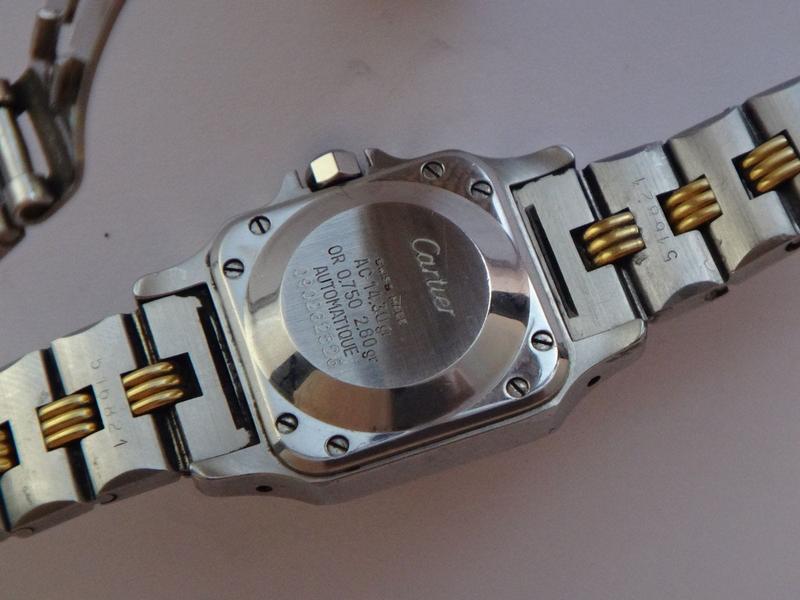
Source
Vintage Watch Trading, Neuchâtel (Schweiz) – LinkThe caseback is rounded and the surface area where the watch touches the skin is increased. -
1987

Source
Cartier Santos in 18k Gold worn by Gordon Gekko (Michael Douglas) in the movie “Wall Street” – Link -
1988
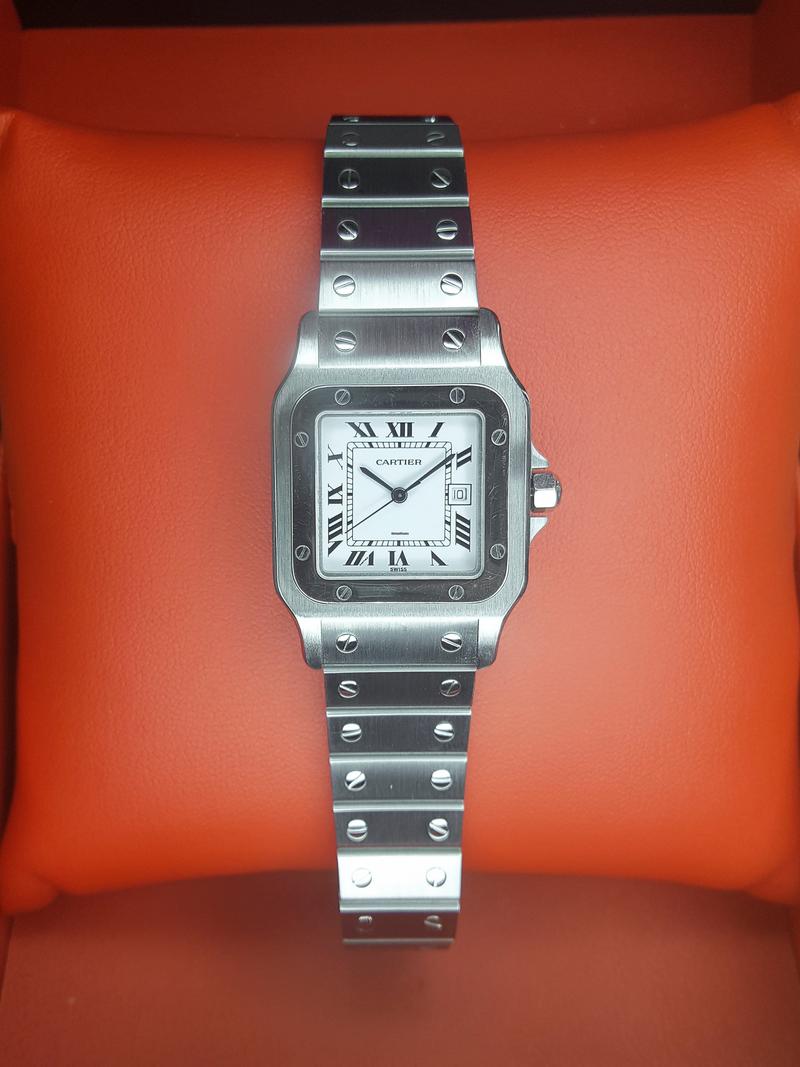
Source
Stefano M., Italien – Link -
1990
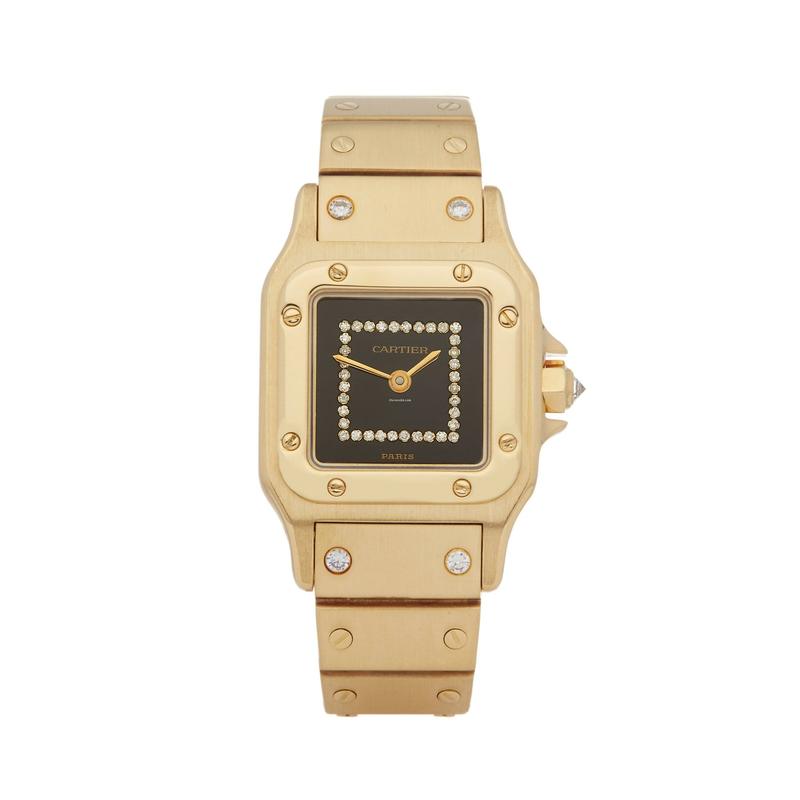
Source
Xupes.nl, Amsterdam (Niederlande) – Link -
1992
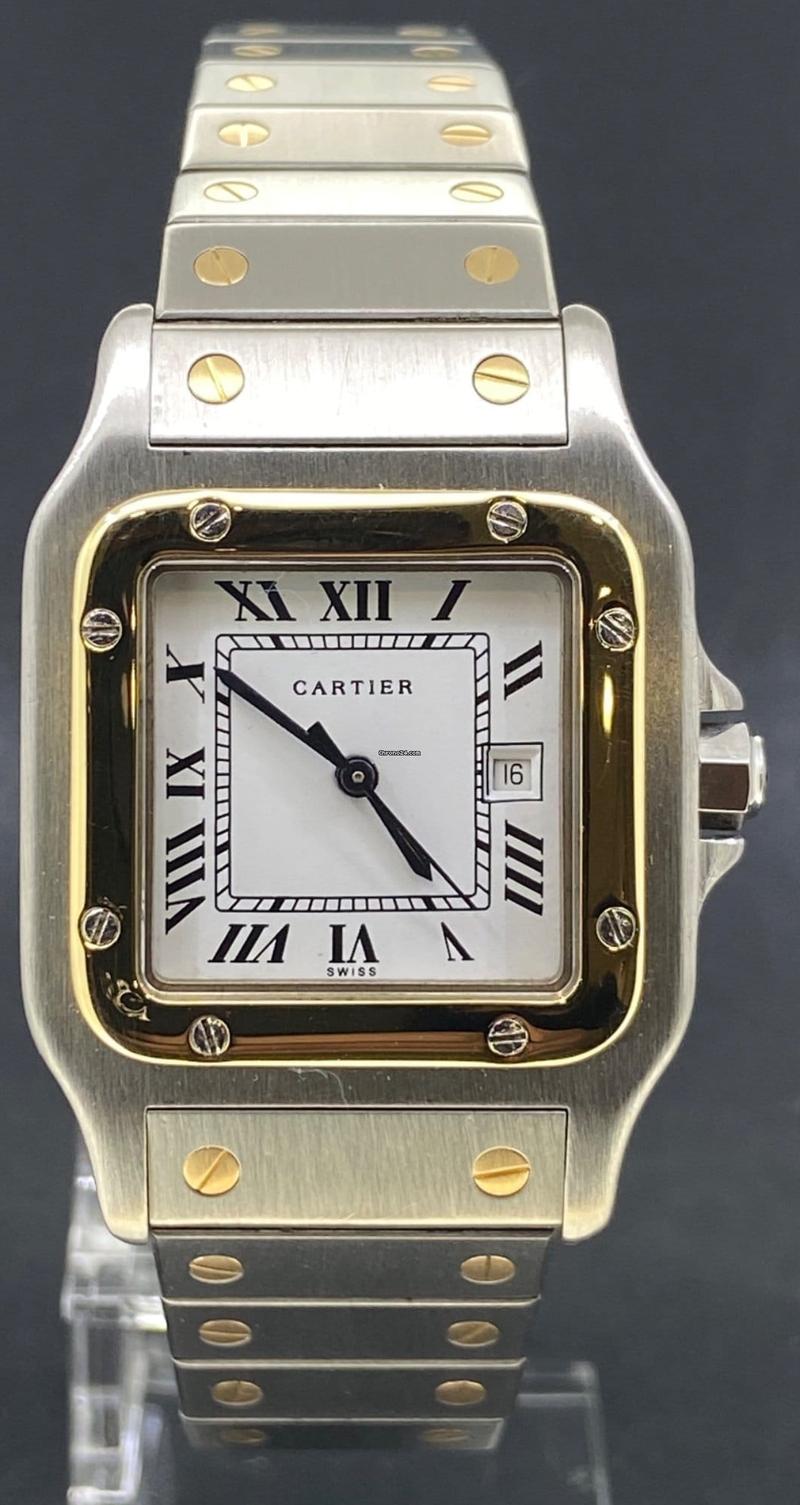
Source
M.J.WATCHES, Antwerpen (Belgien) – Link -
1999
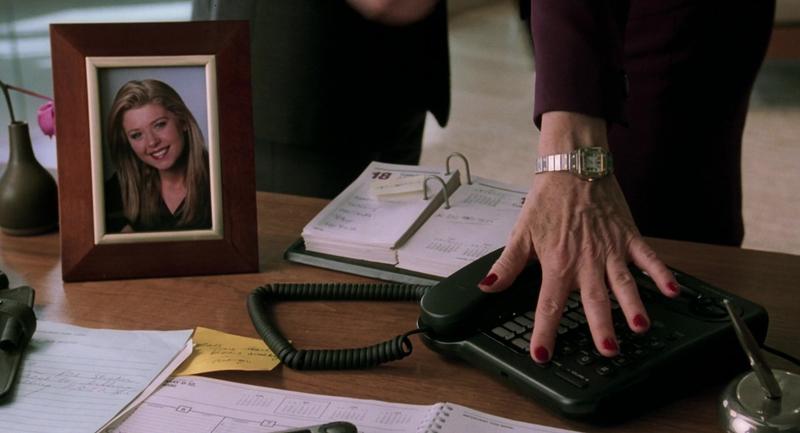
Source
Swoosie Kurtz wearing a bi-color Cartier Santos in the movie “Cruel Intentions” – Link -
2000
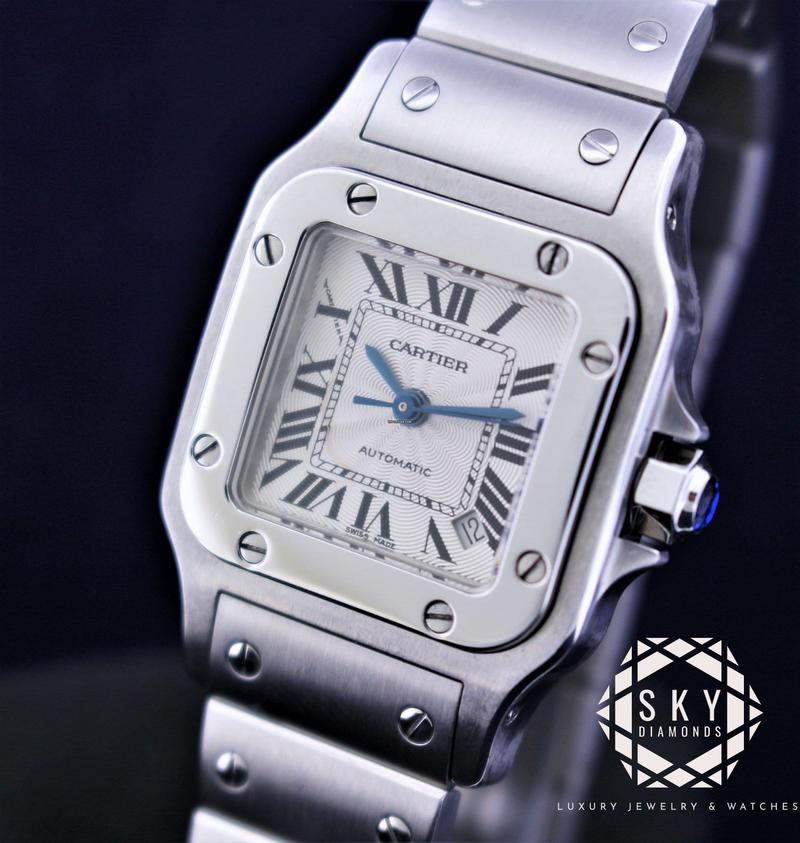
The date window moves in the bottom right corner, displayed in a 135° angle. The dial features a new Guilloché version. 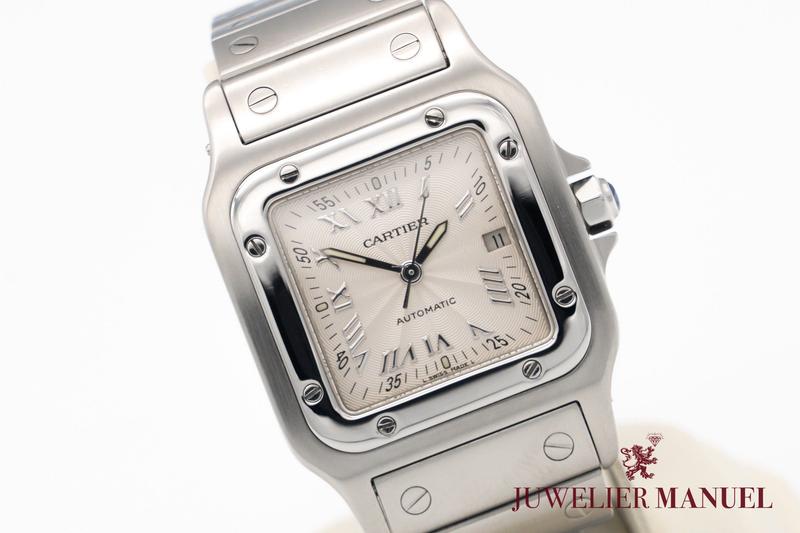
Until now the indices were printed, here they are applied. Still no luminous material though. Second intervals with five-second-indicators are shown on the outer ring of the dial. 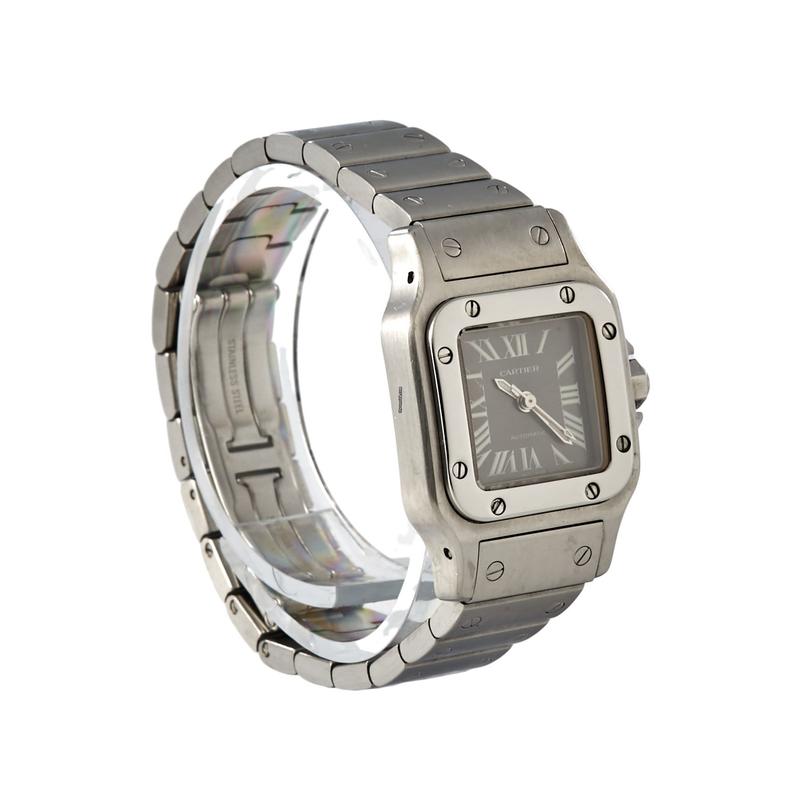
Full Metal Santos. -
2002

Source
Swiss Time Buyers, Miami, Florida (USA) – Link -
2008

Source
Watchmaster ICP GmbH, Berlin (Deutschland) – Link
Source
Watchmaster ICP GmbH, Berlin (Deutschland) – LinkNo visible bracelet clasp, almost flat caseback. -
2010
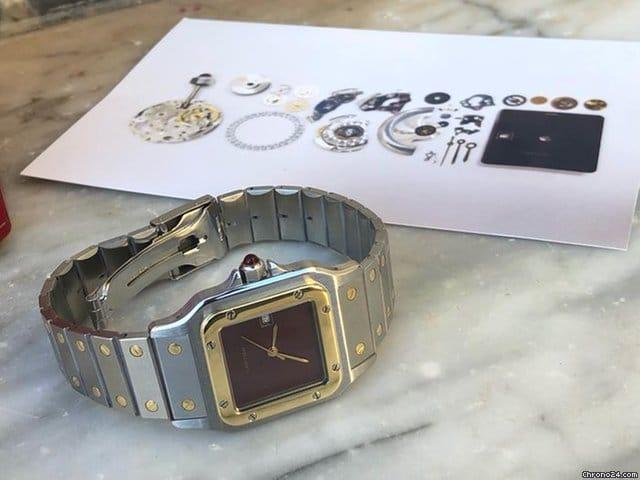
Source
Roberto S., Italien – LinkBurgundy special edition done in a lipstick red. -
2018
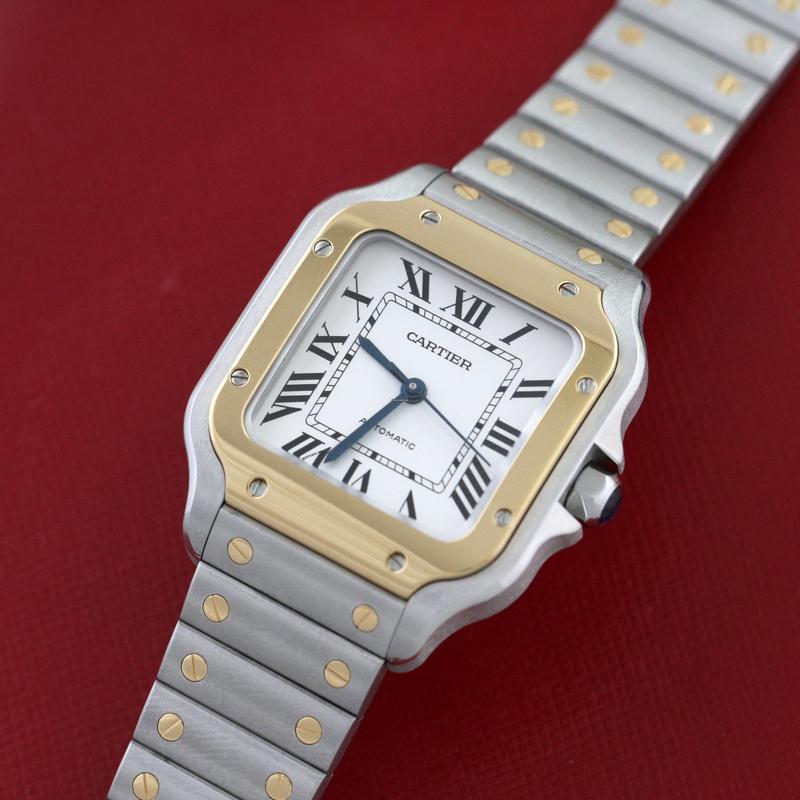
Source
Subdial, London (Grossbritannien) – Link2018 brings a relaunch of the Santos. The bezel doesn’t go around the dial in a square manner anymore, but now slightly extends to both ends where the bracelet meets the case. Cartier previously used ETA movements, now the Santos is running with the in-house Caliber 1847 MC movement with a 42-hour power reserve. The medium size (35 mm) got rid of the date (again), whilst the the larger version at 39.8 mm still has it. The bracelet also has Cartier’s new QuickSwitch system, allowing you to switch bracelets easily and not needing a springbar tool. The bracelet size can also be adjusted by yourself with the SmartLink system. 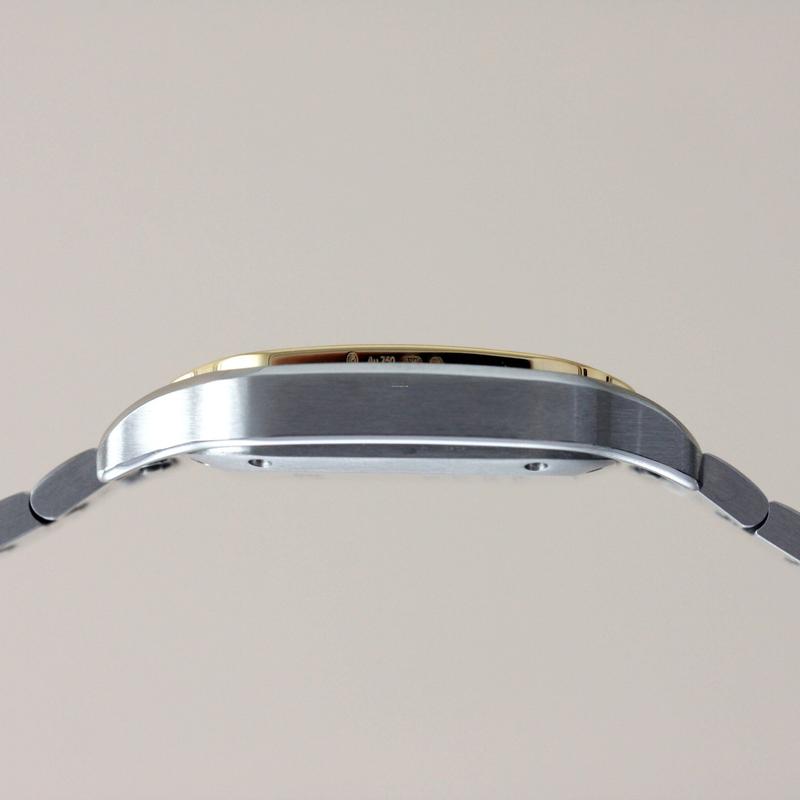
Source
Subdial, London (Grossbritannien) – LinkA slight curvature of the case further removes any gaps between the case and the wrist. This makes the watch wear more comfortable towards a bracelet. 
Source
Subdial, London (Grossbritannien) – Link
What does the future hold?
I only showed you a glimpse into the model variations that exist. Although Cartier is most commonly known as a jewelery maker, its watch history is strong and the timepieces it produces today are respected amongst watch nerds. What we can say is that Cartier manages to keep the balance between producing what has worked over the past 100 years whilst still keeping up with newest technologies. It was interesting for me to discover that the design of the watch didn’t change fundamentally. Still is doesn’t appear like you’re wearing “Grandpa’s watch”.
Personally the watch doesn’t suit me that well, still I’m fascinated by how something can still be that relevant after a long time. Against the common perception of timeless design, I don’t think things have to look bland like a 1960s Braun device, reduced to its utilitarian character. If I could speak to Adolf Loos—who clearly expressed his opinion on ornamentation in his essay “Ornament and Crime”—I’d tell him that ornamentation can still go a long way and a bit of pomp on the wrist produces a smile of the owner, doesn’t hurt anyone and therefore shouldn’t be punishable under law.


Write a comment